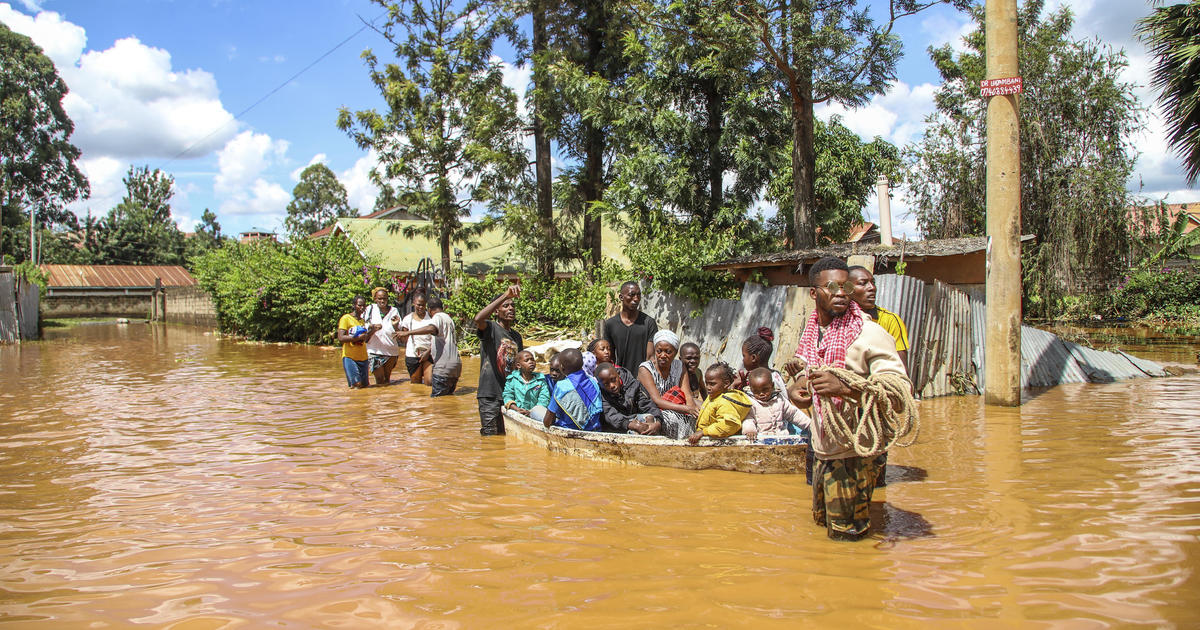U.S. sets record for billion-dollar weather and climate disasters in 2023
With months to go before 2023 wraps up, the U.S. has set a new record for the number of weather disasters in a year that cost $1 billion or more.
There have been 23 climate catastrophes and weather events costing at least $1 billion as of the end of August, breaking the record of 22 set in 2020, the National Oceanic and Atmospheric Administration (NOAA) announced Monday. This year's disasters have so far cost more than $57.6 billion and killed 253 people.
And the number could climb higher. NOAA is still totaling the cost of Tropical Storm Hilary, which wreaked havoc across California last month, and a drought in the South and Midwest. There's also an "above normal" forecast for this year's hurricane season, which will continue through the end of November.
Some of the latest costly disasters include the firestorm in Hawaii, Hurricane Idalia and hail storms in Minnesota.
Last year, there were 18 climate extremes that caused at least $1 billion in damage each, totaling more than $165 billion.
Federal Emergency Management Agency Administrator Deanne Criswell warned in August that the organization's disaster fund could dry up within weeks and delay the federal response to natural disasters. President Biden asked Congress last month for $12 billion to replenish the disaster fund, but Criswell said on "Face the Nation" that $12 billion in extra funds may not be enough.
This year's costliest weather event, adjusted for inflation, was in early March across parts of southern and eastern U.S. states, when severe storms, high winds and tornados caused an estimated $6.1 billion in damage as homes, vehicles, businesses and infrastructure were destroyed, according to NOAA. The recent wildfires on Maui, which decimated the town of Lahaina, caused around $5.5 billion in damage. California flooding, which lasted for months, caused an estimated $4.6 billion in damage.
The number and cost of disasters have increased over time, NOAA said. The increase has happened because of a combination of factors, including climate change, where and how we build, and the value of structures at risk of possible loss.
"Vulnerability is especially high where building codes are insufficient for reducing damage from extreme events," NOAA says. "Climate change is also playing a role in the increasing frequency of some types of extreme weather that lead to billion-dollar disasters— most notably the rise in vulnerability to drought, lengthening wildfire seasons in the Western states, and the potential for extremely heavy rainfall becoming more common in the eastern states."
Between 1980 to 2023, 61 tropical cyclones, 185 severe storms, 22 wildfires, 42 flooding events, 22 winter storms, 30 droughts and 9 freezes costing $1 billion or more impacted the U.S, according to NOAA. The total cost of those 371 events exceeds $2.615 trillion. There were an average of 18 events a year costing a billion dollars or more between 2018 and 2022.
The costliest year for weather disasters was 2017, with around $383.7 billion in damages, according to NOAA. The U.S. was rocked that year by hurricanes Harvey, Maria and Irma, totaling about $328.6 billion in damage. Western wildfires also cost around $22.5 billion.
NOAA began tracking billion-dollar disasters in 1980. In the years since, every state in the country has been impacted by at least one such weather event. Texas has been hit particularly hard— more than 100 billion-dollar weather events have affected at least part of the state. The Central, South and Southeast regions usually experience billion-dollar disasters at a higher frequency than other parts of the U.S.




